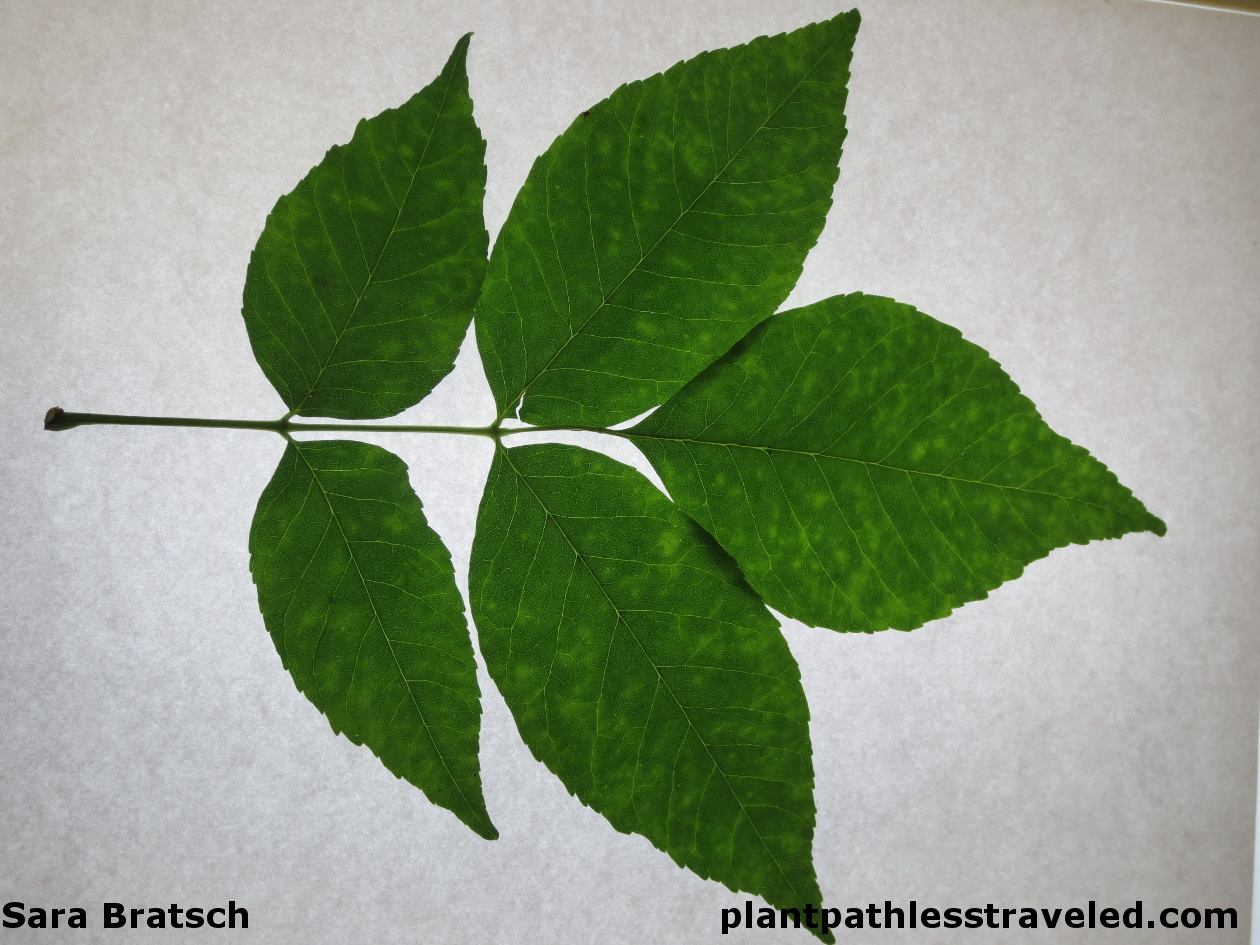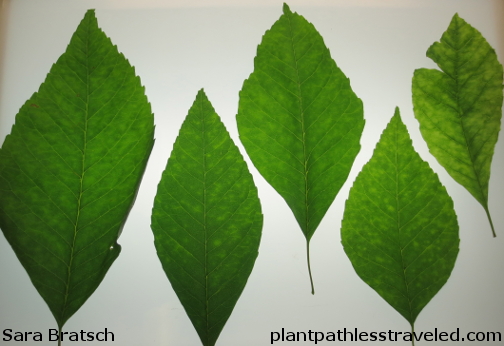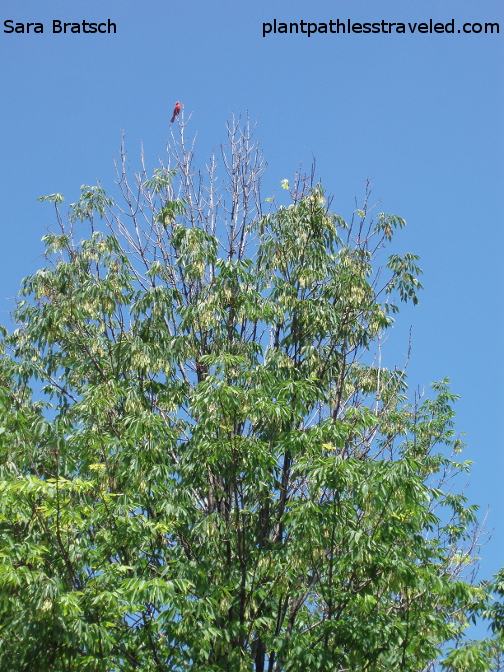White ash mosaic virus
White Ash Mosaic Virus (WAMV) was first described in white ash in Minnesota in 2012. However, WAMV also naturally occurs in green, black, and blue ash.
Plant virus common names are formed by combining the symptoms produced (in this case mottled yellowing or mosaic) with the host plant (white ash). However, this does not mean that the plant the virus is named after is the only one it can infect.
This leaf from a Black Ash shows the symptomatic mottled yellowing caused by WAMV infection.
The foliar symptoms of WAMV can be most easily viewed by holding the leaves up to the sunlight or by using a light box.
Ash trees infected with WAMV will show leaf symptoms throughout the entire growing season until the leaves fall in November. Ash trees from Minnesota, New York, Ohio, and Illinois have tested positive for the presence of WAMV indicating that it is a wide spread virus. WAMV has only been shown to spread to other ash plants by mechanical inoculation. Mechanical inoculation uses an abrasive substance and rubs sap from infected plants onto the surface of a healthy leaf which breaks the surface cells, allowing the virus to enter the plant, but without causing too much damage which would kill the leaf.
Ash tree showing symptoms of White Ash Mosaic Virus (WAMV) and ash decline.
If you would like more information on WAMV, please read the following paper which is open access.
Machado-Caballero, Jose Ernesto, et al. "Identification, Transmission, and Partial Characterization of a Previously Undescribed Flexivirus Causing a Mosaic Disease of Ash (Fraxinus spp.) in the USA." (2013). Plant Health Progress. https://www.plantmanagementnetwork.org/sub/php/research/
All photos were taken by Sara Bratsch. For non commercial use only.
Please contact regarding all other uses.
Cite this article:
Bratsch, Sara. "White ash mosaic virus". 1 August 2014. http://plantpathlesstraveled.com/white-ash-mosaic-virus/


